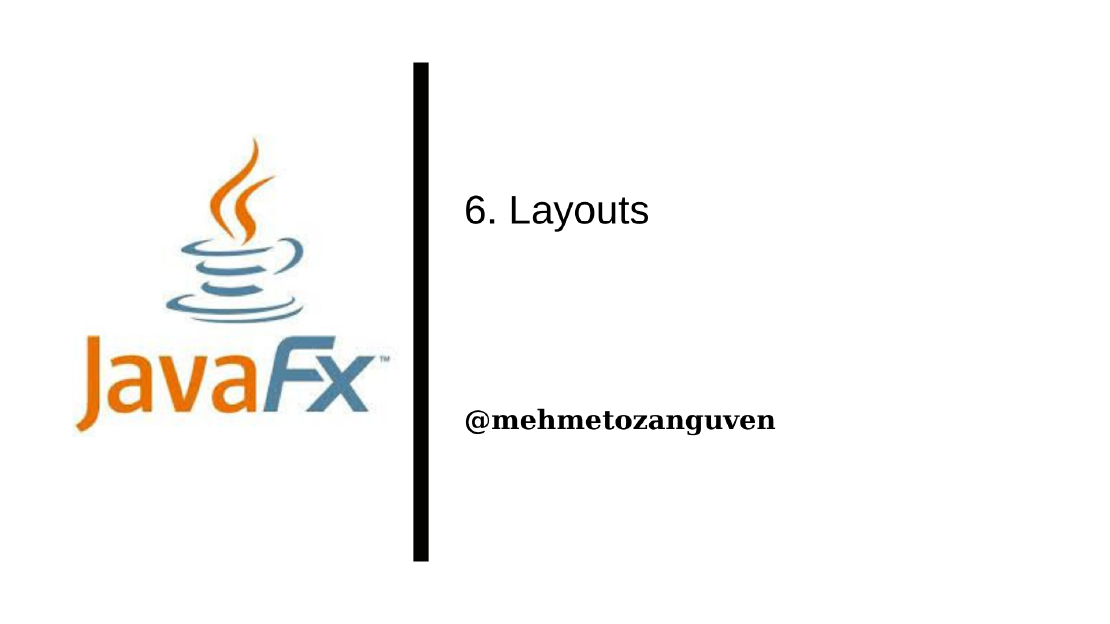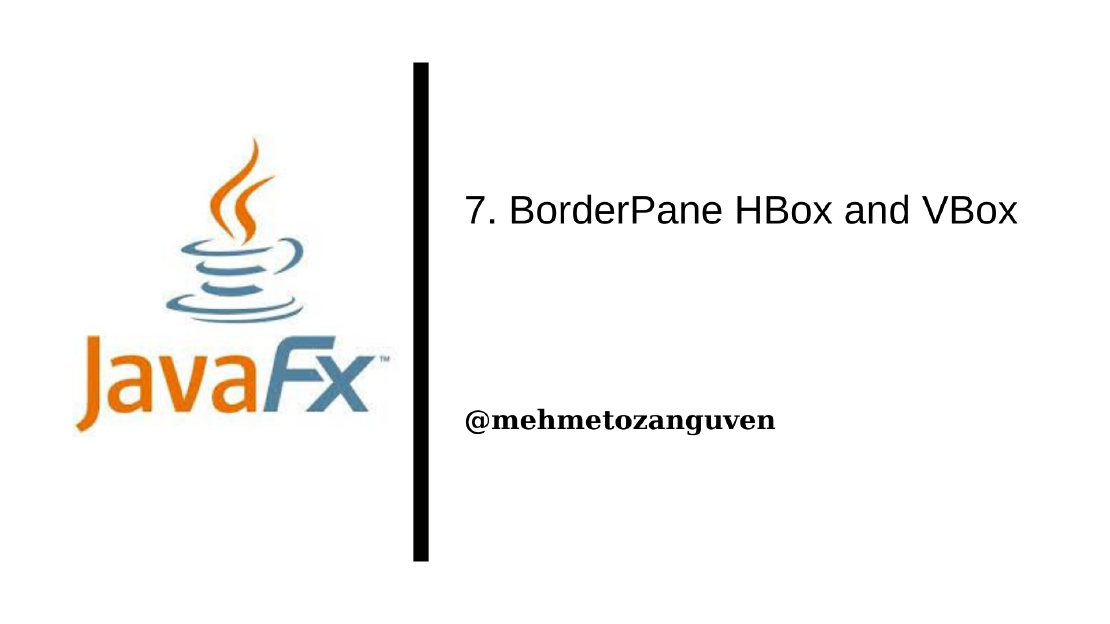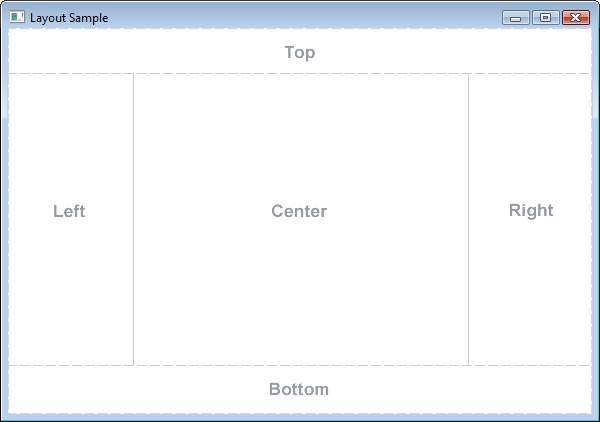
JavaFX Basic Layouts
In this blog post, let’s talk about laying out the components in the JavaFX. We need a pre-defined layout solution because computing the …

BorderPane can be useful for displaying one large central component with four smaller components at left, top, right and bottoms

Note you can also design a border pane without setting the center, top or right vs… components, you are not restricted to put five components at all
BorderPane has two constructors:
public BorderPane() {
super();
}
/**
* Creates an BorderPane layout with the given Node as the center of the BorderPane.
* @param center The node to set as the center of the BorderPane.
* @since JavaFX 8.0
*/
public BorderPane(Node center) {
super();
setCenter(center);
}
If you want to set child nodes as well:
pane.setCenter(node);
pane.setTop(node);
pane.setRight(node);
pane.setBottom(node);
pane.setLeft(node);
A BorderPane sets the sizes of its child nodes:
The default preffered size of BorderPane itself will be set to accommodate the preferred sizes of its children. (The minimum size will be calculated in a similary way, the maximum size is unlimited)
In somehow, some components can not be fit into the space in the borderPane. For instance what would happen if child node, let’s assume it’s the center node, has no resize feature? (then, JavaFX couldn’t fit the node to the available space). In that case(s):
We have a chance to change this behavior by calling static method:
// position could be Pos.CENTER, POS.TOP LEFT, Pos.BOTTOM RIGHT etc..
BorderPane.setAlignment( child, position );
### Margin in BorderPane
We can also set the margin for the child nodes.
A margin is empty space around the child
A margin is specified as a value of type Insets => new Insets(top,right,bottom,left)
We can apply margin to all child nodes while construction the borderPane, or we can set the margin to the individual child node:
BorderPane.setMargin( child, insets );
Now i will talk about HBox but same concept can be also applied VBox as well.
We can add children in the HBox by calling hbox.getChildren.add(node) or hbox.getChildren.addAll()
We can add space for each child in the HBox with hbox.setSpacing( double amount )
By default, an HBox will resize its children to their preferred widths, and leaving some blank extra space on the right. (There is blank space because the width of the HBox will be larger than its preferred width)
The height of the children node will be set to the full height in the HBox. We can stop the streching child nodes to fit the height of the HBox by calling: hbox.setFillHeight(false).. In that case HBox will use the preferred heights of its children.
If we want to grow child nodes as HBox’s width increases (in other words we want the children to grow beyond their preferred widths, to fill the available space in an HBox). To do that we need to set following layout constraint (it is a static method): HBox.setHgrow( child, priority );
Priority.ALWAYS, means that the child will always get a share of the extra space. Even we do this, The child’s width will still be limited by its maximum width, so we might need to increase the maximum width to get the child to grow to the extent that we want.Let’s say we have buttons and we want the buttons to take all available space in HBox. First we need to set HGrow for each button. Second we have to set maximum width to double infinity for each button as well:
HBox.setHgrow(button, Priority.ALWAYS);
HBox.setHgrow(anotherButton, Priority.ALWAYS);
button.setMaxWidth(Double.POSITIVE INFINITY);
anotherButton.setMaxWidth(Double.POSITIVE INFINITY);
If two button’s preferred width are equal, extra space will be distributed equally:
button.setPrefWidth(1000);
anotherButton.setPrefWidth(1000);
I will continue with GridPane and TilePane …

In this blog post, let’s talk about laying out the components in the JavaFX. We need a pre-defined layout solution because computing the …

If you are going to draw something on the screen and handle some mouse event, then you can only use MouseEvent listener and AnimationTimer …